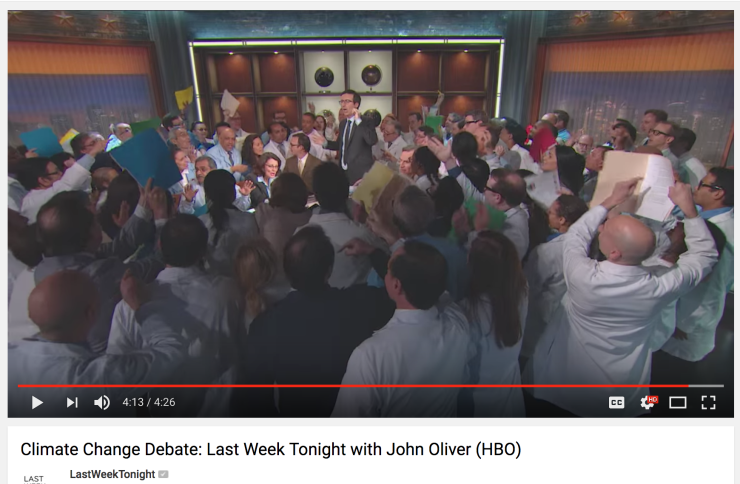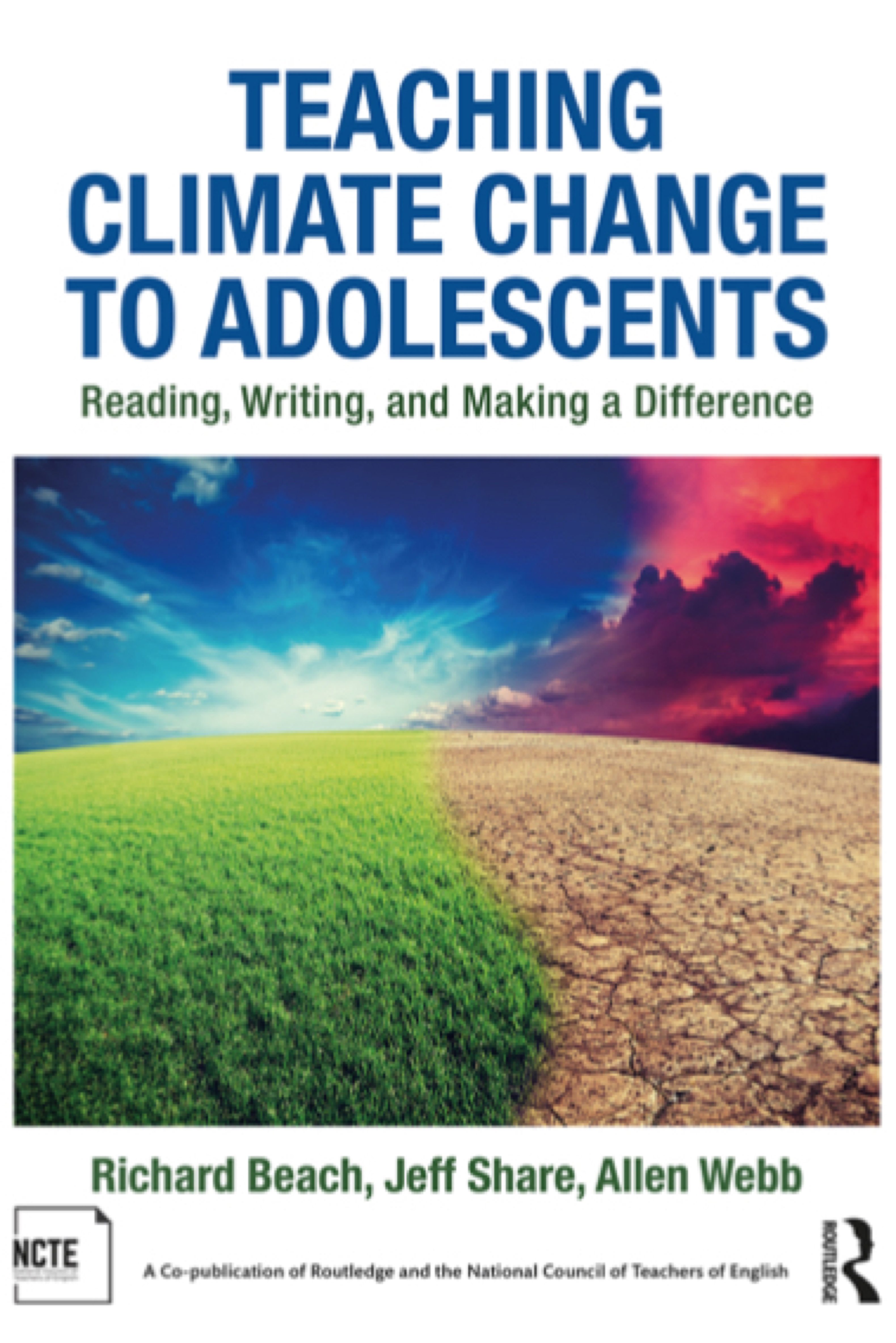Last year was the hottest year on record, and yet the major TV networks (ABC, CBS, NBC, and FOX News) spent 66% less time covering climate change in 2016 than they did in 2015, according to research from Media Matters. This decrease in reporting about climate change led to a combined total of just 50 minutes of news coverage for the entire year. Less than one hour of reporting about climate change for a year that included: the hottest temperatures ever recorded, the signing of the Paris climate agreement, numerous severe weather events, and a major presidential election with candidates voicing opposing views about the environment.
As the Trump Administration’s climate change deniers are gutting the EPA and eliminating funding for any type of research about climate change, the top EPA administrator, Scott Pruitt denies the science of climate change suggesting that this is still a debate. How do we expect children to identify “fake news” when our leaders are telling out right lies?
While social media and new technologies are often contributing to the problem, it is important to remember that they can also be tools we can use to create solutions. Using humor and political satire to challenge the problematic way commercial media have framed climate change as an equal debate between two opposing positions, John Oliver challenges the imbalance in reporting by providing his own “mathematically representative climate change debate.”
 Information communication technologies provide opportunities for youth and adults to connect, organize, and carryout actions to counter commercial media and politicians who are ignoring and denying the realities of climate science. Educators can be key players in this work, teaching students how to use literacy and technology to read and write the word and the world. Our students need role models and guides to facilitate their learning to understand and challenge dominant ideologies that are threatening their very future.
Information communication technologies provide opportunities for youth and adults to connect, organize, and carryout actions to counter commercial media and politicians who are ignoring and denying the realities of climate science. Educators can be key players in this work, teaching students how to use literacy and technology to read and write the word and the world. Our students need role models and guides to facilitate their learning to understand and challenge dominant ideologies that are threatening their very future.
Using a critical media literacy framework of conceptual understandings and questions (see below), educators can encourage their students to ask critical questions about the messages they are hearing and seeing in media all around them. Critical Media Literacy is an inquiry process that applies to all aspects of our lives because we live in such a mediated society in which public discourse always reflect ideological values and perspectives. We must help students question and respond to the messages, systems, and structures that are supported by ideologies of over-consumption, toxic patriarchy, and savage capitalism that are putting our survivability at risk.
Teachers in all subjects can make their content more meaningful and relevant by engaging with popular culture and current events. Incorporating movies, TV, music, social media, news reports, video games, photographs, and all types of media can make classrooms more engaging for students growing up in this media saturated environment. However, simply using more media, is not sufficient. As the public is becoming more accustomed to the media spectacle (Kellner, 2003) with infotainment and “alternative facts”, educators need to guide their students to think critically about our information and entertainment, analyze its construction, and evaluate its effects. Critical media literacy can be an ideal pedagogy to support teachers and students in their struggle to make sense of the messages and to create their own alternative media that can challenge the myths and support the facts. There are many resources available, chapter 6 of our book (Beach, Share, & Webb, 2017) and its corresponding link on the book’s website focus specifically on applying critical media literacy to the study of climate change and environmental justice. Another useful website with plenty of free resources for teaching critical media literacy is http://guides.library.ucla.edu/educ466.
The time is ripe for our students to become the leaders capable of discerning spin from facts and empowered to use all types of media to promote sustainable practices and priorities to protect everybody’s future.
|
Framework for Critical Media Literacy |
|
| Conceptual Understandings | Questions |
| 1. Social Constructivism
All information is co-constructed by individuals and/or groups of people who make choices within social contexts. |
WHO are all the possible people who made choices that helped create this text? |
| 2. Languages / Semiotics
Each medium has its own language with specific grammar and semantics. |
HOW was this text constructed and delivered/accessed? |
| 3. Audience / Positionality
Individuals and groups understand media messages similarly and/or differently depending on multiple contextual factors. |
HOW could this text be understood differently? |
| 4. Politics of Representation
Media messages and the medium through which they travel always have a bias and support and/or challenge dominant hierarchies of power, privilege, and pleasure. |
WHAT values, points of view, and ideologies are represented or missing from this text or influenced by the medium? |
| 5. Production / Institutions
All media texts have a purpose (often commercial or governmental) that is shaped by the creators and/or systems within which they operate. |
WHY was this text created and/or shared? |
| 6. Social & Environmental Justice
Media culture is a terrain of struggle that perpetuates or challenges positive and/or negative ideas about people, groups, and issues; it is never neutral. |
WHOM does this text advantage and/or disadvantage? |
Beach, R., Share, J., & Webb, A. (2017). Teaching climate change to adolescents: Reading, writing, and making a difference. New York, NY: Routledge.
Kellner, D. (2003). Media spectacle. New York, NY: Routledge.

1 thought on “Climate Change and Critical Media Literacy”